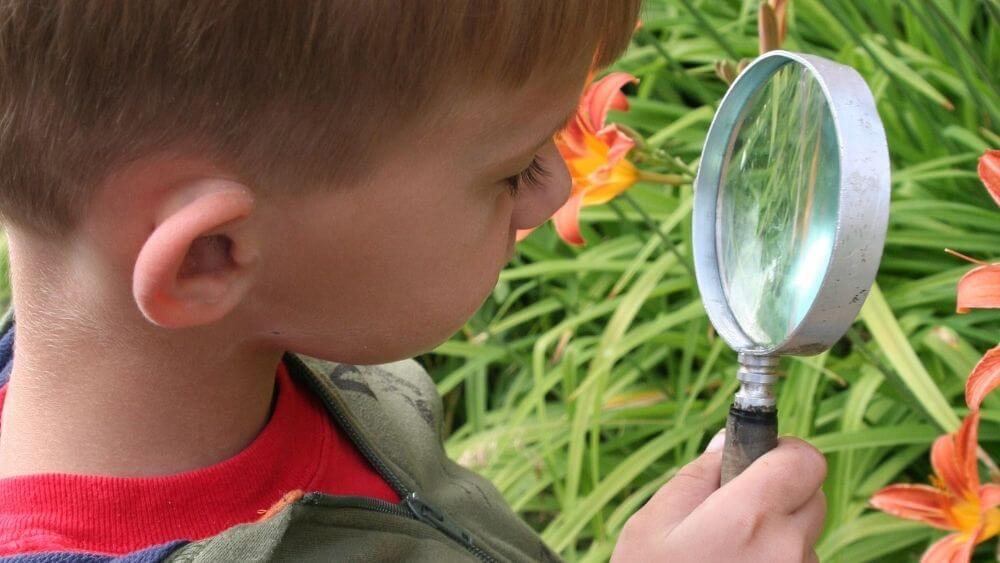Discoveries Made by Kids

Children are naturally inquisitive and curious and let’s be honest the constant barrage of questions can get a little tedious at times. But it is this very curiosity and (annoying) persistence that has led to some of the most fascinating discoveries and inventions in the history of the world. Adults are not the only ones with brilliant ideas and observations, children are on that list too! Don’t believe me? Take a look at these truly brilliant discoveries and inventions made by wee children.
Contents
Discoveries Made by Kids
1. Starry Night
Nathan Grey, a 10-year-old from Nova Scotia, Canada in 2013 became the youngest person to discover a supernova or an exploding star. An avid stargazer, Nathan and his father along with the owner and operator of the Abbey Ridge Conservatory in Stillwater Lake, Nova Scotia spotted the supernova. Nathan was waiting for something spectacular to happen as he had already spent six months watching the night sky, every night. His dreams came true when he spotted a “blinking star” in the sky one night. Soon, he found out it was a supernova and was rightfully proud of his achievement.
2. An Insect’s Life
Researchers and scientists spend years and years working on single problem faced by humankind, in pursuit of the perfect remedy to it. It takes enormous patience and attention to detail to notice things in the controlled environment of a lab and draw the correct conclusions from them. So, it goes without saying that you can’t become a scientist by accident. That’s what makes Simon Kashchock-Marenda’s monumental discovery all the more impressive. As part of a high school science project, Simon was curious to test the effects of popular artificial sweeteners such as Sweet’N Low and Equal on fruit flies.
He got started on his quest and pretty soon noticed that after consuming a particular sweetener called Truvia, fruit flies would die within a matter of a few days. This clearly showed that while it is totally safe for humans to consume Truvia, that might not be the case for fruit flies. Kashchock-Marenda conducted the same experiment under controlled laboratory conditions with his father, a professor of biology in Drexel, Philadelphia and found the same results. This experiment eventually went on to inspire scientists at the University of Drexel, who conducted a study with the hopes of using Truvia as a human-safe insecticide. Amazing, isn’t it?
3. Ancient Tooth
During a walk on a creek bed close to home, nine-year-old Philip Stoll, in April 2014, came across the tooth of a mastodon, a prehistoric relative of elephants, that lived millions of years ago. The tooth was 10,000 years old! The brown, 8-inch long tooth was abnormally large for anyone to know what on earth it was but that was not a problem for young Philip who immediately knew it was a tooth of an animal. Curious, he and his mother immediately contacted James Harding, an expert on reptiles and amphibians at the nearby Michigan State University who told them the weight of their discovery.
4. Deadly Fungi
Now, diseases afflicting human beings can be treated to various different antibiotics and medicines that are available today. However, oftentimes a disease may be so deadly, prevention simply becomes the better option. Such is the case for the disease caused by the fungus Cryptococcus gattii in Southern California. For a decade, people coming in contact with this disease had been getting sick and in some severe cases, even dying. And despite years of research, scientists couldn’t figure out the Virgin of the fungus and from where people were contracting it. But as fate would have it when seven-year-old Elan Foller was looking for a fun science project for school, her infectious disease specialist father, suggested she try and find the source of the C. gattii fungus.
Well, not only was she successful in finding three trees infected with the fungus in the greater Los Angeles area during her investigation, she shared her work with researchers at Duke University, where it eventually became part of a study published in the journal PLOS Pathogens.
5. Spacegirl
Ten-year-old Canadian Kathryn Grey was a curious young child and on one occasion decided to compare some of the pictures of the night sky taken by her father on New Year’s Eve with some newer pictures, as part of a fun, little experiment. However, she soon discovered that there actually had been a change in the sky and based on her hunch, they sent the pictures to be analyzed. To her sheer surprise, Kathryn Aurora Grey had actually spotted a supernova through her analysis, thus becoming the youngest person to ever discover a supernova.
6.The Dino Discovery
Children always seem to be unusually drawn towards dinosaurs and so it only seems fitting that a high-school kid discovered the youngest duck-billed dinosaur ever unearthed. During a high-school palaeontology project in 2009, while conducting come field-work, Kevin Terris discovered some baby dinosaur bones sticking out from under a boulder in Utah’s Grand Staircase-Escalante National Monument.
Shocked and excited by the possibility of finding an entire fossil, Kevin and his classmates, under the wing of Andrew Farke, a palaeontologist and curator at Raymond M. Alf Museum of Paleontogy in Claremont, dug up the remains of a Parasaurolophus. This cretaceous-era herbivore lived on the Earth 75 million years ago and this fossil actually became the smallest, youngest and most complete duck-billed Parasaurolophus ever unearthed.
7. A Young Indian Jones
Like most children, 9-year-old Matthew Berger was not one to sit still and so when his dad, an archaeologist was working at a dig near Johannesburg, South Africa, he went out on his own to do some exploring nearby. But the results of his discovery were mind-blowing. Just outside the site Lee Burger, Matthew’s father was canvassing, the 9-year-old found bones that were later identified as the 2 million-year-old remains of Australopithecus sediba, a prehistoric relative of humans. This discovery inspired the whole team to dig up the site where Matthew had found the bones and surely, they unearthed two skeletons, one of an adult female and one of a juvenile male.
The most fascinating part is that upon detailed study and research, scientists concluded that the fossils were in fact remains of a previously unknown ancient human ancestor.
8. Glimmer of Hope
Global warming and climate change are some of the biggest challenges faced by our planet, in this day and age. One of the most significant contributors to global warming is CFCs or chlorofluorocarbons, which rapidly deplete the zone layer of the atmosphere responsible for trapping the harmful UV rays of the sun. These gases are commonly found in air conditioners, aerosol sprays, refrigerants, etc. However, 13-year-old Larry Caduada’s discovery in 2006 of a natural CFC alternative may be the answer this planet has been looking for.
The young teenager discovered that a substance called selinene, found in celery, can be used as an environment-friendly coolant instead of the typical Freons. He even published a paper based on his findings.
So, push your child to be open and creative, show them the benefits of their curiosity. Your children are sure to outsmart you very soon!






Responses